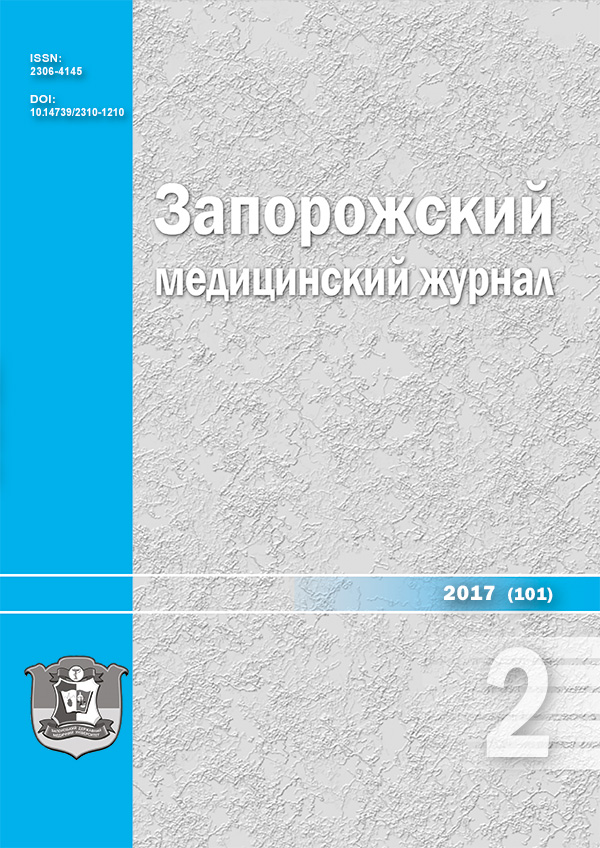The study of antimicrobial activity of povidone-iodine solution under the influence of laser irradiation in vitro
DOI:
https://doi.org/10.14739/2310-1210.2017.2.95737Keywords:
photosensitization, povidone-iodine, diode laser, infrared raysAbstract
The purpose of this work was to evaluate the antimicrobial activity of povidone-iodine solution as a photosensitizer and effective optical range of laser activation identification in vitro.
Materials and Methods. As the test cultures reference strains of Candida albicans ATCC 885-653, Staphylococcus epidermidis ATCC 14990, Escherichia coli ATCC 25992, Pseudomonas aeruginosa ATCC 27853, Enterococcus faecalis ATCC 6783 were used. 10 % povidone-iodine solution was added to Petri dishes with the microorganisms on agar and was left in situ for 60 seconds. Fifteen test Petri dishes were irradiated using the remote handle VRV4 λ = 658 nm (Test 1), the other fifteen – with the handle VRIP1 λ = 810 nm (Test 2). Four controls were carried out: the first control (C1) – Petri dishes with inoculated culture without the povidone-iodine solution and laser irradiation influence. The second control (C2) – the photosensitizer was not irradiated. The third control (C3) – it was the irradiation by wavelength 658 nm without chromatophore using. The fourth control (C4) – it was the irradiation by wavelength 810 nm without chromatophore using.
Results. The obtained data have shown that povidone-iodine solution was activated in the infrared optical range, as evidenced by the complete absence of test microorganisms growth in Petri dishes “Test 2”. It was found out a reliable decrease in the number of microorganisms colonies in the Petri dishes “Test 1”, but it was achieved by the povidone-iodine antimicrobial activity, rather than by laser activation. This is confirmed by the fact that the number of microorganisms colonies in the Petri dishes ”Test 1” was not statistically different from the number of colonies in the second control group where povidone-iodine solution was not irradiated.
Conclusions. It has been proved that the photosensitizer 10% povidone-iodine solution was activated by 810-nm wavelength laser irradiation in the infrared optical range. There had been no growth of microorganisms in nutrient media in test plates compared to the control.
References
Nazarian, R. S., Filimonova, N. I., Heiderikh, O. H., & Spiridonova, K. Yu. (2014) Vyvchennia vplyvu dii fotosensybilatora i nyzkointensyvnoho lazernoho vyprominiuvannia na kilkisnyi sklad mikroflory zubnoho nalotu [Study of photosensibilizator action and low intensity laser radiation on the quantitative composition of microflora of plaque]. Klinichna farmatsiia, 4(18), 41–44. [in Ukrainian].
Volkovitska, T. A., Ruzin, H. P., Murashko, E. V., et al. (2010) Vplyv lazernoho oprominennia na sklad i kharakter mikroflory zuboiasnevykh kyshen pry likuvanni heneralizovanoho parodontytu [Effect of laser irradiation on the composition and nature of microorganisms in dentogingival pockets in the treatment of generalized periodontitis]. Sovremennaya stomatologiya, 2, 86–88. [in Ukrainian].
Zborovskaya, A. V. (2011) Pryhnichennia zrostannia hrybkovoi flory 0,1% metylenovym synim pry lazernomu oprominenni [Inhibition of fungous flora growth with 0,1% methylene blue in combination with laser radiation]. Naukovyi visnyk Uzhhorodskoho universytetu, 3, 83–85. [in Ukrainian].
Nikolishyn, A. K., Sidash, Yu. V., & Fedorchenko, V. I. (2010) Antybakterialna aktyvnist svitlovykh promeniv i fotosensybilizatoriv [Antibacterial activity light rays and photosensitizers]. Ukrainskyi stomatolohichnyi almanakh, 3(2), 35–39. [in Ukrainian].
Panas, M. A. (2014) Vplyv nyzkointensyvnoho lazernoho vyprominiuvannia na umovno-patohenni mikrobni symbionty rotovoi porozhnyny (Dis…kand. med. nauk) [The impact of low laser to opportunistic microbial symbionts of oral cavity. Dr. med. sci. diss.]. Lviv. [in Ukrainian].
Rabinovich, I. M., Dmitrieva, N. A., & Golubeva, S. A. (2012) Antimikrobnaya e´ffektivnost´ fotoaktiviruemoj dezinfekcii kornevykh kanalov (in vitro) [The antimicrobial effectiveness of photoactivated disinfection of root canals (in vitro)]. Klinicheskaya stomatologiya, 2(4), 20–22. [in Russian].
Nazarian, R. S., Spiridonova, K. Yu., Piontkovska, O. V., & Vlasov, A. V. (2015) Fotodynamichna terapiia: vid davnyny do sohodennia (ohliad literatury) [Photodynamic therapy: from antiquity to the present day (literature review)]. Novyny stomatolohii, 3(84), 66–70. [in Ukrainian].
Crispino, A., Figliuzzi, M.M., Iovane, C., Del Giudice, T., Lomanno, S., Pacifico, D., et al. (2015) Effectiveness of a diode laser in addition to non-surgical periodontal therapy: study of intervention. Annali di stomatologia, 6(1), 15–20.
Queiroga, A. S., Trajano, V. N., Lima, E. O., Ferreira, A. F., Queiroga, A. S., & Limeira, F. A Jr. (2011) In vitro photodynamic inactivation of Candida spp. by different doses of low power laser light. Photodiagnosis Photodynamic Therapy, 8(4), 332–336. doi: 10.1016/j.pdpdt.2011.08.005.
Talebi, M., Taliee, R., Mojahedi, M., Meymandi, M., & Torshabi, M. (2016) Microbiological efficacy of photodynamic therapy as an adjunct to non-surgical periodontal treatment: a clinical trial. Lasers in medical science, 7(2), 126–130. doi: 10.15171/jlms.2016.21.
Downloads
How to Cite
Issue
Section
License
Authors who publish with this journal agree to the following terms:- Authors retain copyright and grant the journal right of first publication with the work simultaneously licensed under a Creative Commons Attribution License that allows others to share the work with an acknowledgement of the work's authorship and initial publication in this journal.

- Authors are able to enter into separate, additional contractual arrangements for the non-exclusive distribution of the journal's published version of the work (e.g., post it to an institutional repository or publish it in a book), with an acknowledgement of its initial publication in this journal.
- Authors are permitted and encouraged to post their work online (e.g., in institutional repositories or on their website) prior to and during the submission process, as it can lead to productive exchanges, as well as earlier and greater citation of published work (See The Effect of Open Access)

